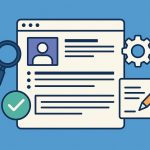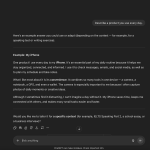Struggling with unsecured debt can be overwhelming, but there are numerous financial assistance programs available to help. Understanding these programs can make a significant difference in your financial stability. Here’s how you can navigate them effectively.
Dealing with unsecured debt is a challenge many people face. However, by leveraging the right financial assistance programs, you can find a pathway to relief. This article aims to guide you through the crucial aspects of these programs, ensuring you are well-informed and prepared.
Understanding unsecured debt
Unsecured debt refers to any loan or credit that is not backed by collateral. Common types include credit card debt, personal loans and medical bills. Because these debts do not have physical assets attached to them, they often come with higher interest rates and more stringent repayment terms. Understanding the nature of unsecured debt is vital as it directly impacts your approach to finding relief.
When you’re buried under unsecured debt, it’s essential to explore your options meticulously and understand all of the steps involved in the debt resolution process. This will be critical in finding the best program suited for your needs. This means researching various assistance programs and understanding how each works can save you from making costly mistakes.
Types of financial assistance programs
Various financial assistance programs can help you manage or eliminate your unsecured debt. These include debt consolidation loans, credit counseling services and debt settlement programs. Each program has its unique set of benefits and drawbacks, making it essential to choose one that aligns with your specific financial situation.
For instance, debt consolidation loans allow you to combine multiple debts into a single payment, often at a lower interest rate. Credit counseling services offer professional advice and may negotiate better terms on your behalf. Debt settlement programs focus on negotiating with creditors to reduce the overall amount owed. By understanding these different avenues, you can make an informed decision on which path to take.
Evaluating the pros and cons
Each financial assistance program comes with its advantages and disadvantages. Debt consolidation might simplify your payments but could extend the repayment period. Credit counseling provides professional guidance but may require strict budgeting and lifestyle changes. Debt settlement can significantly reduce what you owe but may impact your credit score negatively.
It’s important to weigh these factors carefully before committing to any program. Consider consulting with a financial advisor who can provide personalized advice based on your unique circumstances. Doing so will ensure that you choose a program that offers sustainable solutions rather than temporary fixes.
Taking actionable steps
Once you’ve chosen a suitable financial assistance program, it’s crucial to take actionable steps to resolve your unsecured debt. Start by gathering all necessary documentation related to your debts and understanding the specific requirements of the chosen program.
Create a detailed budget plan that aligns with your new repayment strategy. Keep track of all payments and maintain open communication with your creditors or service providers. Consistency is key; adhering strictly to the plan will eventually help you eliminate debt and achieve financial freedom.
Lynn Martelli is an editor at Readability. She received her MFA in Creative Writing from Antioch University and has worked as an editor for over 10 years. Lynn has edited a wide variety of books, including fiction, non-fiction, memoirs, and more. In her free time, Lynn enjoys reading, writing, and spending time with her family and friends.















